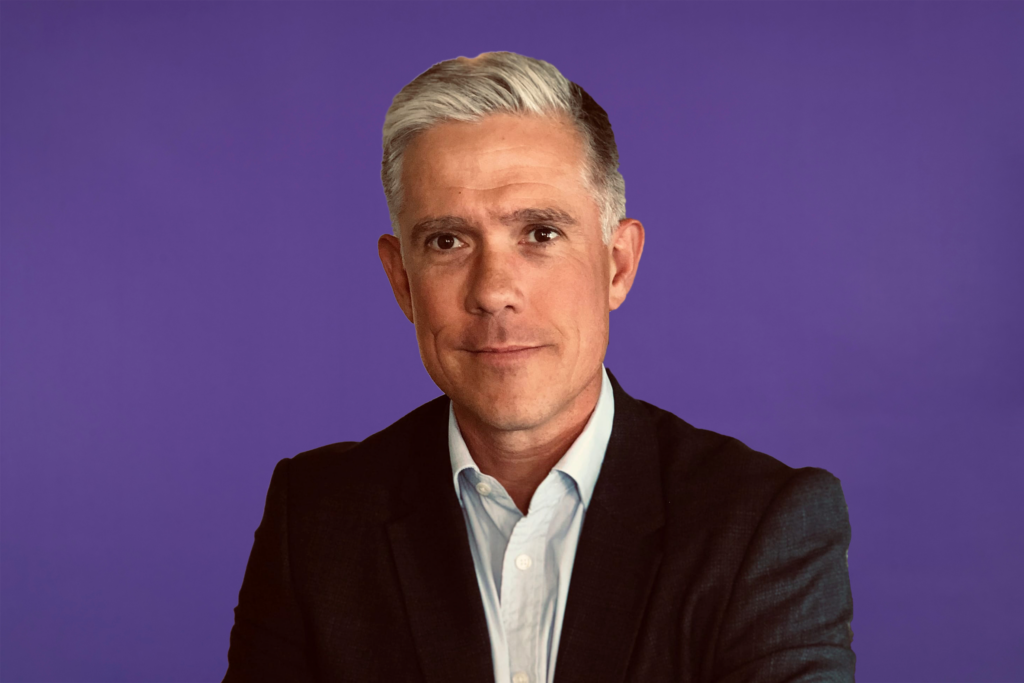Replacing a core business system: What leaders get wrong

Replacing a core business system — whether ERP, CRM or HR — is one of the most critical and consequential strategic decisions a leadership team can make on behalf of their organisation.
This is not just about technology; it’s about aligning strategy, operating model and culture to enable major transformation. If executed correctly, there is a huge opportunity to scale, build resilience and agility; executed poorly, it can lead to spiralling costs, poor adoption and strategic drift.
Leaders need to view system replacement projects as a chance to transform their business, not just as an IT project replacing outdated technology. Here’s what to consider before you start.
The case for change: Clarify the “why”
The first question should not be “which system?” but “why now?”
- Does your organisation require scalable systems to support international expansion, acquisitions or new revenue models?
- Are your current processes heavily manual, fragmented or reliant on key personnel?
- Are audit, controls or compliance gaps driving the issue?
- Are your current systems holding back service, speed or customer experience?
The leadership team must articulate a clear “why” to the wider business, because without it, programmes risk becoming IT projects disconnected from business outcomes. A compelling, strategy-aligned case for change gives the programme purpose, direction and credibility across the organisation.
The real transformation timeline: Balancing urgency with realism
Leadership teams often underestimate both the time required and the organisational impact of replacing a core system. Note that:
- ERP and finance transformations can often span 12–24 months, with significant parallel running and change management required for a successful delivery.
- Business subject matter experts, not just IT, should participate in workshops, testing and adoption activities.
- The business still needs to “keep the lights on” during any business change or transformation.
- Business leaders must set realistic expectations with the board, shareholders and employees alike. Speed matters, but clarity, sequencing and readiness matter more.
Choose the right approach — not just the right system
Choosing the right technology is clearly important but deciding upon the delivery approach required to succeed is just as crucial. Here are some key things to consider:
- Cloud-first vs on-premise? Many technology vendors will naturally want to push out their cloud solutions, however, do they align with your data, regulatory, or integration requirements?
- Big bang vs phased rollout: Do you cut over in one go, or phase by geography, function, or business unit?
- Standardisation (adopt) vs customisation (adapt): Are you willing to adopt “best practice” processes, or will you demand heavy customisation?
- Adopting standard processes keeps implementation lean, lowers total cost of ownership and makes future upgrades seamless.
- In contrast, adapting adds cost and complexity, creates technical debt and can block you from taking advantage of new features — ultimately eroding the very value the programme was meant to deliver.
Left unsupervised, scope creep and change requests can quickly erode budgets and extend timelines. It is therefore important to embed guardrails early to ensure that you always remain in control.
The power of people: Creating internal evangelists
Replacing a core system is not just a technical challenge, it’s a people challenge. The success of any transformation depends on whether the end-users feel like they have a voice, are engaged and supported. Change fatigue, fear of the unknown and “we have always done it this way” mindsets can derail even the best-designed solutions.
Replacing a core system is rarely just a technology project — it is a human transition. People typically resist change because they fear uncertainty and disruption, not because they dislike progress.
The goal for leadership is not just to manage change but to create advocates for it. This means:
- Co-creation: Involve key stakeholders early so they feel ownership.
- Facilitate communication: Share the “why” behind the decision, not just the “what.”
- Support and enablement: Provide the right training, tools and confidence people need to succeed.
- Celebrate wins: Recognise your early adopters and demonstrate the positive impact of change.
Don’t underestimate the power of your people. When people are invested in the new system and see its value, adoption rates increase and return on investment benefits can be realised faster.
Owning the transformation, not outsourcing it
Systems Integrators (SIs) and vendors promise to “de-risk” your technology adventure, but ultimate accountability sits with your business. Too many organisations treat system replacement as a supplier-led project rather than a business-owned transformation — and pay the price in missed outcomes and expensive overruns.
To retain control and maximise value:
- Governance: Set up clear programme structures, decision rights and escalation routes that keep leadership engaged and accountable.
- Independent assurance: Do not let the SI “mark their own homework.” Independent oversight provides an objective view, raises issues early and protects your investment.
- RAID Discipline: Manage risks, assumptions, issues and dependencies continuously — not just for go-live — so surprises do not derail delivery.
By owning the transformation, you will be in a stronger position to ensure that the technology aligns with your strategy, culture and future state vision, rather than just meeting a supplier’s Statement of Work.
Creating lasting change: Thinking beyond go-live
Go-live is a key milestone, not the finish line. Too many programmes declare success at cutover, only to see the benefits evaporate. Here’s what to expect:
- Stabilisation phase: Expect 3–6 months of heightened support, data corrections and embedding new processes.
- Benefits tracking: Define success metrics upfront, such as efficiency gains, improved reporting, faster close cycles and track them rigorously.
- Continuous improvement: Modern platforms release new features quarterly, so it’s important to build internal capability to exploit them.
Thinking beyond go-live is critical, because it’s just the starting point for value delivery. The first few months should focus on stabilisation — resolving defects, protecting business continuity and embedding process discipline — but CFOs should demand rigorous benefits tracking and ROI measurement against the original business case.
This ensures the investment delivers tangible outcomes, such as faster close cycles, improved reporting and cost efficiency. Building capability for continuous improvement allows the business to exploit quarterly platform releases and avoid creating tomorrow’s legacy system. Planning beyond go-live safeguards spend, mitigates risk and keeps the programme aligned to strategic and financial objectives.
The leadership team should demand a value realisation plan that extends well beyond implementation.
The transformation trap: Avoiding common pitfalls
Ensuring that you have good quality data should not sit just with IT; it is a business discipline that impacts every function of an organisation. Having strong data governance in place ensures that the organisation has one version of the truth, prevents reworks later and gives the business confidence in future decision-making.
Transformation programmes often underestimate the time and effort required for data migration, cleansing and classification. Organisations should treat data as a strategic asset, not just a by-product of their systems. It is imperative to invest early in master data management, along with having a clear ownership model and ongoing stewardship.
If all the above is considered, and the rest of the programme will run more smoothly. The testing becomes meaningful, reporting is trusted and automation delivers the promised efficiency gains. Get it wrong, and the organisation risks expensive delays, frustrated users and systems that quickly degrade into the next legacy problem.
Weak executive sponsorship can be fatal: if leaders appear disengaged, it risks the rest of the business quickly treating the programme as optional, which can undermine adoption.
Other common challenges include over-customisation, which creates complex, often fragile solutions, failing to plan for business continuity.
Finally, it is worth remembering that vendors and system integrators deliver technology, not business outcomes. True success depends on the organisation stepping up to transform its processes, culture and ways of working.
Visionaries: The role of leadership
Leaders don’t need to become technologists overnight, but they do need to become active sponsors and decision-makers. They must:
- Clearly articulate the vision so that everyone understands the direction of travel, why it matters and the size of the prize.
- Specify the non-negotiables early, such as budget safety barriers, scope principles and success metrics, to ensure that the programme stays aligned.
- Provide protection, shielding teams from competing priorities and actively seek out and engage stakeholders from the boardroom to those in the trenches to get buy-in.
- Monitor delivery through independent assurance and transparent reporting, ensuring risks are flagged early and value is delivered.
Final thoughts
Replacing a core business system should not be underestimated. It is not just about replacing existing technology with something new and shiny; it’s about seizing the opportunity to rethink how your business functions and operates, visualising how you want it to operate in future, as well as how it will better serve your clients and customers.
For leadership teams, the challenge is to move beyond system selection and SI contracts, and instead to own the transformation journey — clarifying the “why,” managing the “how,” and ensuring continuity after go-live.
Organisations that succeed are those that:
- Align system change to strategic ambition.
- Balance urgency with readiness.
- Prioritise people and culture.
- Take ownership of risk and governance.
- Plan for benefits realisation beyond go-live.
By having the right building blocks in place, system replacement becomes not just a technology upgrade but a strategic enabler for growth, business resilience and long-term success.
Partner with Definia
Ready to turn your system replacement into strategic transformation? Get in touch with us to discuss how we can help you navigate the journey from vision to lasting results.



